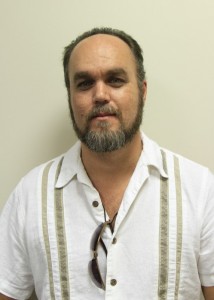 On Monday I spoke via Skype with a group of students enrolled at Georgetown University. Some friends of mine teach a class on social justice and conflict studies. Twice I have joined the class to discuss my own experiences with the criminal justice system, restorative justice, my current work, and any other insightful (and difficult) questions they come up with.
On Monday I spoke via Skype with a group of students enrolled at Georgetown University. Some friends of mine teach a class on social justice and conflict studies. Twice I have joined the class to discuss my own experiences with the criminal justice system, restorative justice, my current work, and any other insightful (and difficult) questions they come up with.
Several wondered how prison could be changed to address issues of safety and violence, and whether or not restorative responses still allowed for incarceration. These are interesting topics to me, and I am able to talk about them with ease, but a few questions left me pondering the limits of criminal justice reform. These were questions that addressed what I think of as structural issues.
For instance, why does the average prisoner have an elementary school reading level? Is he in prison because of that, or are people with that level of education more likely to be incarcerated? Why are African Americans disproportionately incarcerated? It is not because they are more likely to commit crimes. Even when the circumstances of a given crime and background are accounted for, they are more likely to be sent to prison and to receive longer sentences. The same is true for Latinos, poor people, Native Americans, and other traditionally disadvantaged and marginalized groups.
One of the greatest writers in the field of conflict studies, Johan Galtung, introduced the concept of structural violence in a 1969 article for the Journal of Peace Research. For Galtung, structural violence is an “avoidable impairment of human needs.” This definition includes a lot of “isms” including racism, classism, sexism, and others. It doesn't take a lot of investigation to see how these phenomena can be connected to the current system of justice.
Even if we were somehow able to create the perfect prison, with programs that are effective, safe living conditions, supports for maintaining family connection, and relevant educational classes, it still would not address the issues that lead to incarceration in the first place.
I don’t wish to ignore personal responsibility, but I also recognize that environment and other factors outside of the individuals control have an impact on their perception of choices and ability to transcend hardships. Consider a November 4th article in the New York Times entitled "After the Violence, The Rest of Their Lives".
The article tells the story of The Chicago Project, led by Northwestern University psychiatry and behavioral sciences professor Linda A. Teplin, a study of 1,800 youth who entered the juvenile justice system at an early age. The youth, interviewed between 1995 and 1998, have been tracked ever since.
Consider a few statistics from the study. Over 80 percent of the juveniles who enter the system early are gang members, 70 percent of the males have used a firearm (starting at an average age of 14), 20 percent of the participants on a given day are incarcerated, and 71 percent of the men and 59 percent of the women are unemployed. The youth surveyed in the study die, usually violently, at a rate three to five times as high as comparable residents of the county.
All of these statistics do not flow from personal choice, and to ignore that fact is to hide from reality. Do some individuals rise above the circumstances? Of course, but these exceptions to the rule, while admirable, do not excuse the rest of us from considering the realities of stark contrasts in equality, opportunity, and risk that exist between most Americans and those that live in the worst areas of the nation. Until these structural issues are fully faced and dealt with we will always have injustice, no matter how much we “improve” the criminal justice system.
